How to Create Stunning Topiary Shapes
Creating stunning topiary shapes is an art form that combines creativity, patience, and a little bit of gardening know-how. Imagine transforming your garden into a whimsical wonderland, where plants are sculpted into intricate shapes and designs that catch the eye and spark the imagination. Whether you’re looking to create elegant spirals, geometric forms, or even playful animal shapes, the beauty of topiary lies in its ability to enhance your garden's aesthetic appeal dramatically.
So, why should you consider diving into the world of topiary? For starters, it’s a fantastic way to express your personality and style through nature. Plus, topiary can serve as a focal point in your garden, drawing attention and admiration from visitors. But before you grab your shears and start snipping away, it’s essential to understand the fundamentals of topiary. This includes the types of plants that work best, the techniques for shaping them, and the maintenance required to keep those shapes looking sharp.
In this article, we’ll explore the various aspects of topiary, from the basics to advanced shaping techniques. You’ll learn about the best plants for topiary, how to care for them, and some creative design ideas to inspire your gardening journey. So, roll up your sleeves and get ready to unleash your inner artist as we delve into the enchanting world of topiary!
Before you start shaping your plants, it’s crucial to grasp the history and evolution of topiary. Originating from ancient Rome, topiary was initially a way to showcase wealth and status through meticulously shaped plants. Over the centuries, it has evolved into a beloved gardening practice enjoyed by many. Today, topiary is not just about creating shapes but also about enhancing the overall beauty and character of your garden.
When it comes to the types of plants suitable for shaping, you’ll find that some species are more forgiving than others. The best candidates for topiary are typically those with dense foliage and a growth habit that lends itself well to trimming. Understanding these basics will set you on the right path to crafting your own stunning designs.
Selecting the appropriate plants is a crucial step in your topiary journey. Not all plants are created equal when it comes to shaping. You’ll want to consider factors like growth habits, foliage density, and maintenance requirements. For example, some plants grow quickly and require more frequent trimming, while others are slow-growing and need less attention.
Here’s a quick look at some popular plants that are commonly used for topiary:
- Boxwood: Known for its dense foliage and ability to hold shapes well.
- Privet: Fast-growing and easy to shape, making it a favorite among gardeners.
- Yew: A classic choice for traditional topiary due to its lush, evergreen leaves.
When choosing plants, consider the differences between deciduous and evergreen options. Deciduous plants lose their leaves in winter, which can affect the aesthetics of your topiary during the colder months. On the other hand, evergreens maintain their foliage year-round, providing consistent beauty and structure to your garden. Each type has its unique advantages, so think about your design goals and seasonal preferences when making your selection.
Utilizing native plants for your topiary not only supports local biodiversity but also provides unique shapes and textures that harmonize with your garden's ecosystem. Native plants are often more resilient and require less maintenance, making them an excellent choice for sustainable gardening practices.
Now that you’ve chosen your plants, let’s talk about care and maintenance. Just like any other garden feature, topiary requires attention to thrive. Regular watering, appropriate fertilization, and vigilant pest management are essential to keep your plants healthy and looking their best. Remember, the goal is to maintain those beautiful shapes while ensuring your plants remain robust and vibrant.
Once your plants are established, it’s time to dive into the exciting world of shaping techniques. From simple trimming to intricate designs, there are various methods to achieve stunning topiary shapes. The right tools can make all the difference, so invest in quality shears and pruning tools to help you along the way.
Mastering the art of trimming and pruning is vital for creating clean lines and defined shapes. Understanding when and how to prune will not only enhance the aesthetics of your topiary but also promote healthy growth. Aim to trim your plants regularly, especially during the growing season, to maintain their form and encourage dense foliage.
If you’re aiming for precision, consider utilizing templates and guides. These can simplify the shaping process and help you achieve consistent designs. You can either create your own templates or find existing ones that suit your vision. With a little practice, you’ll be able to shape your plants into stunning topiary masterpieces.
Feeling inspired yet? Let’s explore some creative design ideas for your topiary. From geometric shapes to whimsical animal forms, the possibilities are endless! Incorporating these designs into your garden layout can create a striking visual effect that captivates the senses.
Geometric shapes are a fantastic way to add a modern touch to your garden. Think spheres, cubes, and pyramids that create a striking contrast against the organic forms of other plants. These shapes can serve as focal points or be used to frame pathways, guiding visitors through your garden with style.
If you want to infuse a bit of whimsy into your outdoor space, consider creating animal topiary. Shaping plants into playful animal forms can bring a sense of charm and joy to your garden. Whether it's a majestic deer or a cheeky rabbit, these designs not only enhance your garden's visual appeal but also evoke a sense of wonder.
1. How often should I trim my topiary plants?
It depends on the plant species and your desired shape. Generally, trimming every few weeks during the growing season is ideal to maintain shape.
2. Can I use any plant for topiary?
Not all plants are suitable for topiary. Look for dense foliage and a growth habit that can be easily shaped, like boxwood or privet.
3. What tools do I need for topiary shaping?
Invest in quality pruning shears, hedge trimmers, and possibly some templates to help achieve precise designs.
4. How can I maintain the health of my topiary plants?
Regular watering, appropriate fertilization, and pest management are key to keeping your topiary healthy and vibrant.
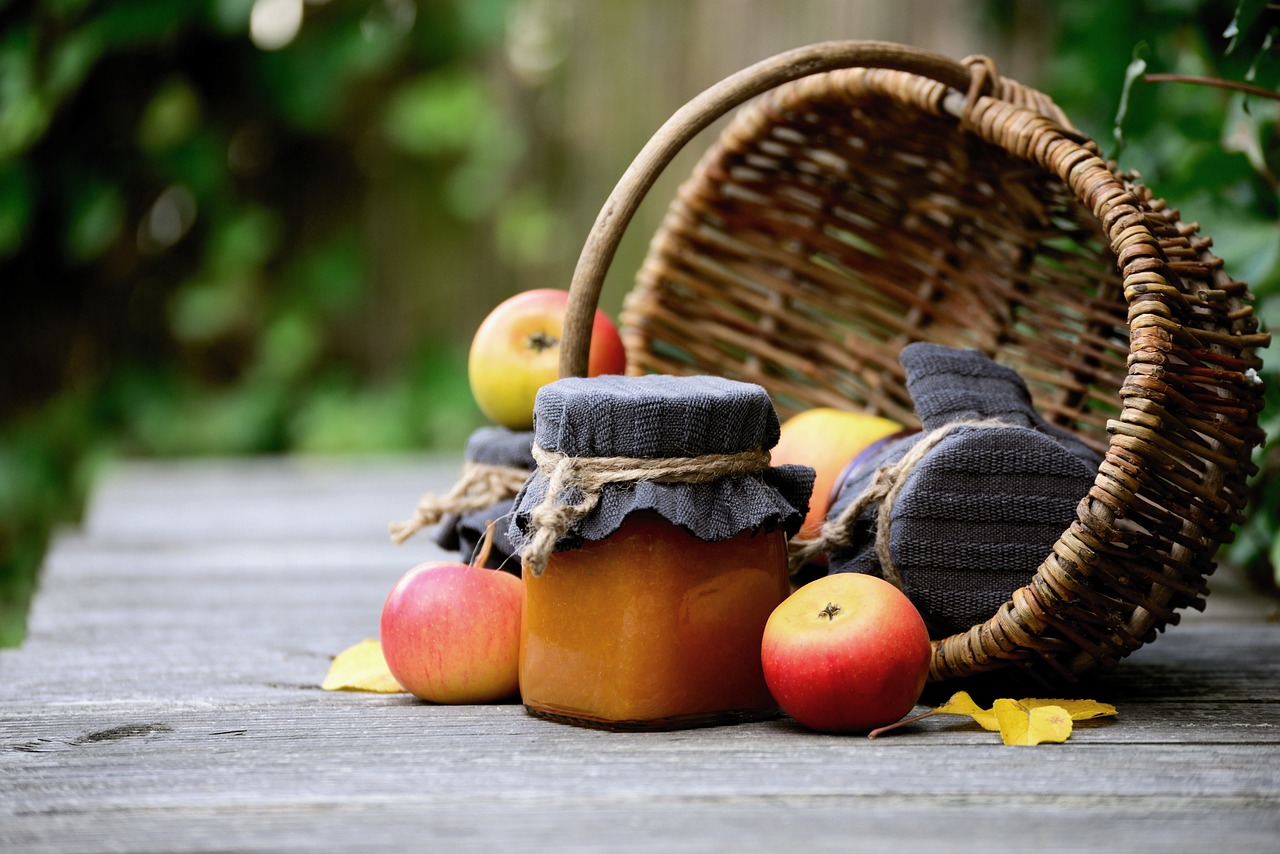
Understanding Topiary Basics
Topiary is more than just a gardening trend; it’s an ancient art form that transforms ordinary plants into living sculptures. The origins of topiary can be traced back to the Roman Empire, where gardeners would shape shrubs and trees into intricate designs, often mimicking the forms of animals or geometric patterns. This practice not only enhanced the beauty of gardens but also showcased the gardener's skill and creativity. Today, topiary continues to captivate garden enthusiasts, offering a unique way to express personal style and creativity through nature.
At its core, topiary involves the art of pruning and training plants to grow into specific shapes. While it may sound simple, achieving stunning results requires a good understanding of the plants you’re working with, as well as the techniques used in shaping them. There are various types of plants suitable for topiary, including both deciduous and evergreen species. Each type brings its own unique characteristics to the table, influencing not just the design possibilities but also the maintenance requirements.
When diving into topiary, it’s essential to familiarize yourself with the fundamental techniques. The most common methods include:
- Trimming: Regular cutting of the plant to maintain its shape and encourage dense growth.
- Pruning: More extensive cutting back of branches to promote new growth and refine the plant's form.
- Shaping: Using tools and templates to guide the plant into your desired design.
Understanding these basics will set you on the right path to creating stunning topiary shapes that can enhance your garden's aesthetic appeal. Whether you’re aiming for a classic look with rounded shapes or something more whimsical like animal figures, the principles of topiary remain the same: patience, precision, and a passion for creativity. As you embark on your topiary journey, remember that each snip and trim is a step towards turning your garden into a vibrant masterpiece.
As you explore the world of topiary, consider the various design possibilities that await you. From elegant spirals to intricate animal shapes, the only limit is your imagination. With the right knowledge and tools, you can create a garden that not only reflects your personality but also invites admiration from friends and family. So, grab your pruning shears and let’s dive deeper into the enchanting realm of topiary!
What plants are best for topiary? Popular choices include boxwood, privet, and yew, as they have dense foliage and respond well to pruning.
How often should I prune my topiary? Regular maintenance is key. Most topiary plants benefit from pruning at least twice a year, but this can vary based on the species and growth rate.
Can I create topiary shapes in containers? Absolutely! Container gardening with topiary can add a unique touch to patios or balconies, as long as you choose the right plants for the size of the container.
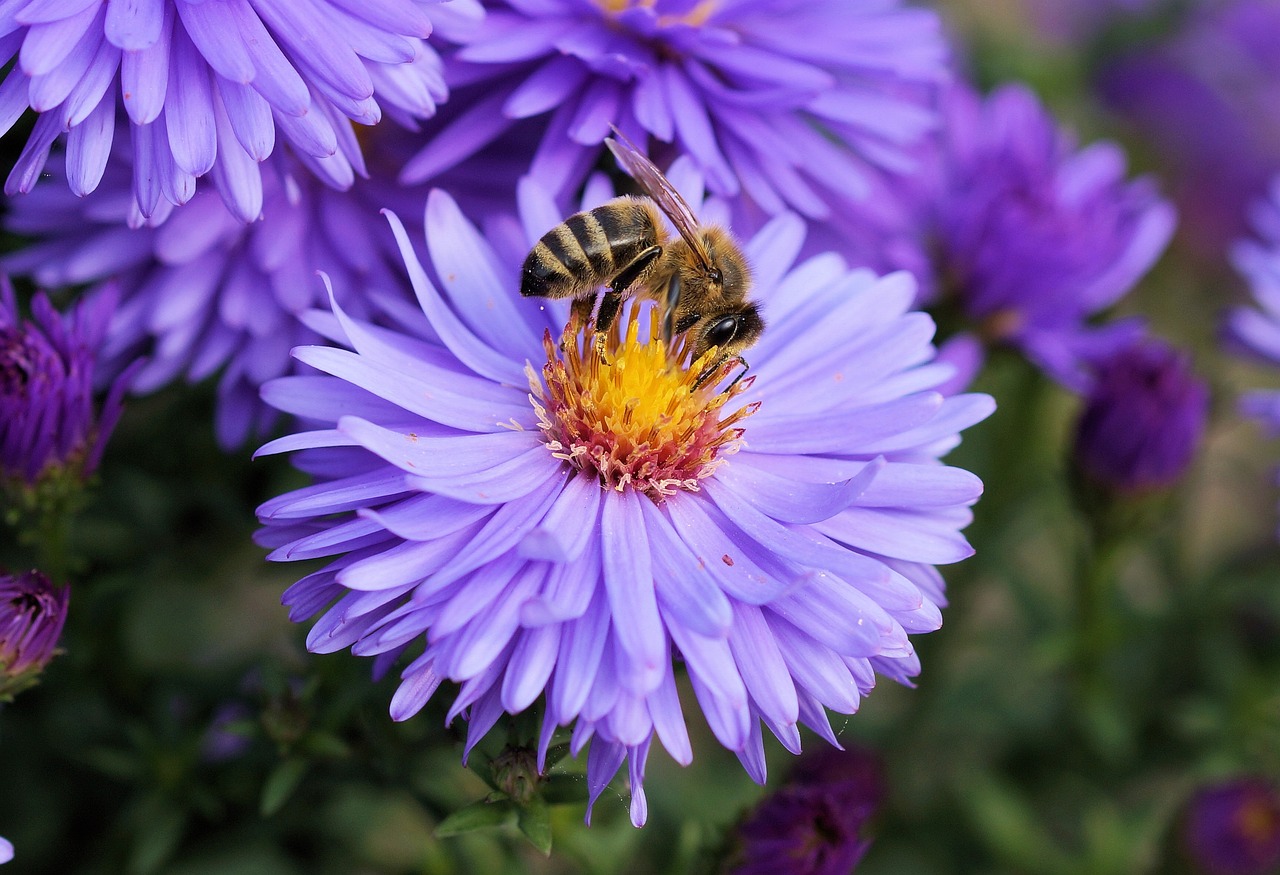
Choosing the Right Plants
When it comes to creating stunning topiary, the choice of plants is absolutely crucial. Selecting the right species can make the difference between a breathtaking garden feature and a tangled mess. It's essential to consider factors such as growth habits, foliage density, and maintenance requirements. After all, you want your topiary to not only look fabulous but also thrive in its environment.
One of the first things to think about is the growth habit of the plants you choose. Some plants grow upright, while others may spread out or have a more bushy appearance. For topiary, you generally want plants that have a dense growth habit, as this will allow you to shape them more effectively. Additionally, consider the foliage density; thicker leaves will provide a fuller appearance, making your design more striking. Plants that are too sparse may not hold their shape well and could lead to a less impressive outcome.
Maintenance is another critical aspect to consider. Some plants require more care than others, including regular trimming and specific watering needs. If you're new to topiary, it might be wise to start with low-maintenance plants that won’t demand constant attention. This way, you can focus on mastering the art of shaping without getting overwhelmed. Here are some popular options that balance beauty and ease of care:
- Boxwood: A classic choice for topiary, boxwood is known for its dense foliage and ability to be shaped into various forms.
- Privet: This fast-growing shrub is perfect for beginners and can be easily molded into different shapes.
- Yew: With its rich green color and sturdy branches, yew is another fantastic option for creating intricate designs.
Moreover, understanding the differences between deciduous and evergreen plants can significantly influence your design choices. Deciduous plants lose their leaves in the fall, which can create a stark contrast in your garden during the winter months, while evergreens maintain their foliage year-round, offering a consistent look. If you prefer a garden that looks vibrant throughout the year, evergreens might be your best bet. However, if you enjoy seasonal changes and the beauty of bare branches in winter, then incorporating deciduous plants could add an interesting dynamic to your garden.
Lastly, consider using native plants for your topiary projects. Native species are well-adapted to your local climate, soil, and pests, making them easier to care for and more resilient. By choosing native plants, you're not only enhancing the beauty of your garden but also supporting local biodiversity. Imagine crafting a unique topiary shape that blends seamlessly into the natural landscape, providing both aesthetic and ecological benefits!
In conclusion, the right plants can elevate your topiary game to new heights. By considering growth habits, foliage density, maintenance needs, and the benefits of using native species, you can create stunning shapes that will leave a lasting impression in your garden. So, roll up your sleeves and get ready to transform your outdoor space into a topiary wonderland!
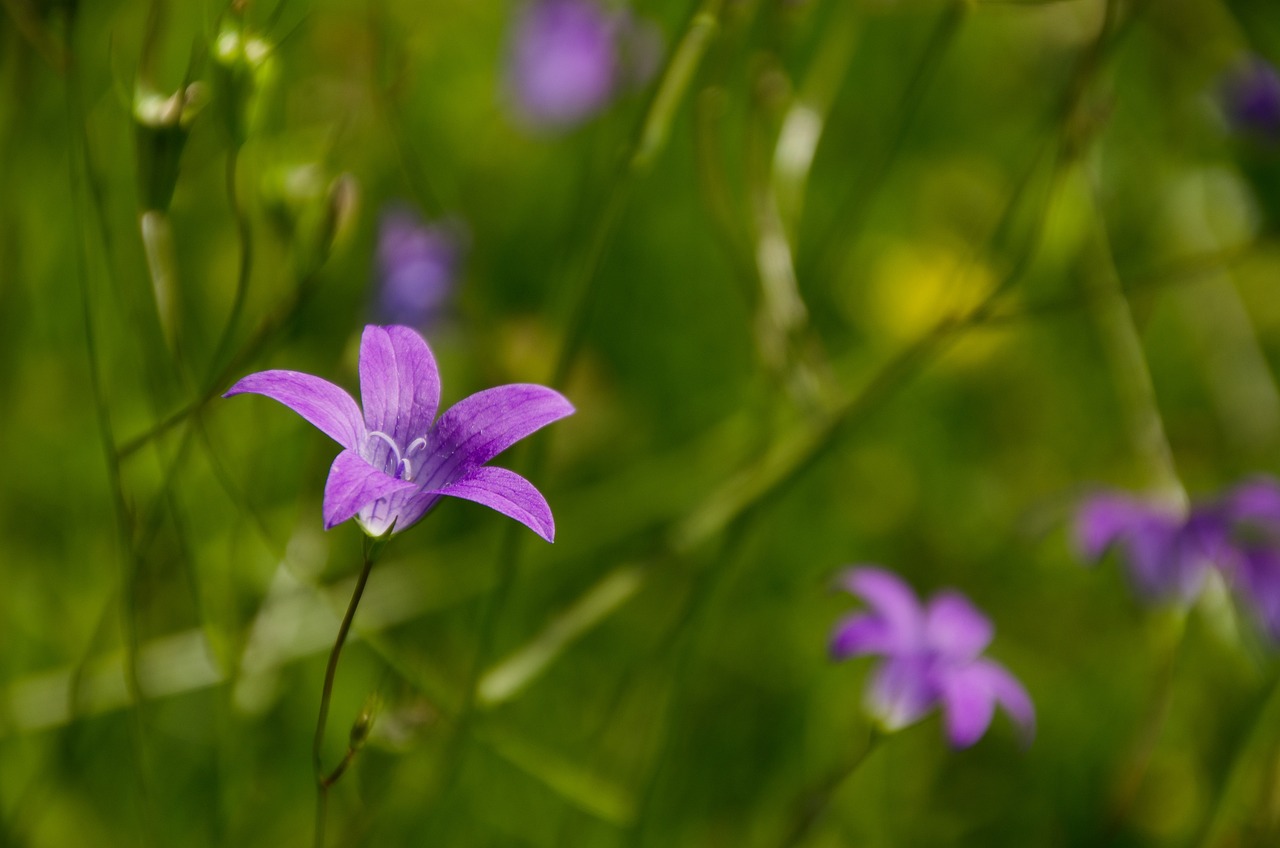
Popular Topiary Plants
When it comes to creating stunning topiary shapes, the choice of plants is absolutely crucial. Certain species not only lend themselves well to shaping but also thrive with proper care and maintenance. Among the most popular topiary plants, you will find boxwood, privet, and yew. Each of these plants has unique characteristics that make them ideal for topiary work, and understanding these traits can help you make informed decisions for your garden.
Boxwood is perhaps the most favored choice for topiary enthusiasts. With its dense foliage and slow growth rate, it allows for meticulous shaping and is often used to create intricate designs. Boxwoods are evergreen, meaning they retain their leaves year-round, providing a lush green backdrop for your garden even in winter. They are also relatively hardy, making them suitable for various climates.
Next on the list is privet, known for its fast growth and adaptability. This plant is perfect for those eager to see quick results in their topiary endeavors. However, the rapid growth of privet means it requires more frequent trimming compared to boxwood. The lush, green leaves provide a vibrant canvas for shaping, and the plant can be easily trained into various forms, from spheres to more elaborate designs.
Then we have yew, a classic choice that has stood the test of time in the world of topiary. Yew trees are renowned for their longevity and can be shaped into stunning forms that last for decades. Their dark green foliage adds a dramatic touch to any garden, and like boxwood, they are also evergreen. Yew plants can be a bit more challenging to work with due to their slower growth rate, but the results can be breathtaking.
| Plant Type | Growth Rate | Ideal Shapes | Maintenance Level |
|---|---|---|---|
| Boxwood | Slow | Intricate designs | Medium |
| Privet | Fast | Spheres, hedges | High |
| Yew | Medium | Classic shapes | Medium |
While these three plants are among the most popular, there are many other options worth considering. Depending on your local climate and the specific aesthetic you wish to achieve, you might explore other varieties such as holly, laurel, or even certain types of conifers. Each plant has its own unique growth habits and characteristics, so take some time to research what might work best for your specific topiary project.
In conclusion, selecting the right plants is a foundational step in the art of topiary. Whether you choose boxwood, privet, yew, or another species, understanding their growth patterns and maintenance needs will set you on the path to creating breathtaking shapes that enhance your garden's beauty. So, roll up your sleeves, grab your shears, and let your creativity flourish as you shape your green canvas into stunning works of art!
- What is the best time to prune topiary plants? - The best time to prune is during the growing season, typically in late spring or early summer, to encourage healthy growth.
- Can I use any plant for topiary? - Not all plants are suitable for topiary. Look for plants with dense foliage and a growth habit that allows for shaping.
- How often should I water my topiary plants? - Watering frequency depends on the plant type and weather conditions, but generally, keep the soil consistently moist but not soggy.

Deciduous vs. Evergreen
When diving into the world of topiary, one of the most crucial decisions you'll face is choosing between deciduous and evergreen plants. Each type has its own unique characteristics, advantages, and aesthetic appeal that can significantly influence your garden's design. So, what’s the difference, and how do you decide which is right for your topiary creations?
Deciduous plants are those that shed their leaves annually, entering a period of dormancy during the colder months. This seasonal transformation can bring a dynamic quality to your garden, as the shapes and structures of these plants become more pronounced once the leaves fall. Imagine a perfectly sculpted topiary that stands out against a winter backdrop, showcasing its intricate form. However, with this beauty comes a downside: during the fall and winter, your topiary might lose some of its visual interest as it becomes bare. Yet, this can also provide an opportunity for creativity, allowing you to incorporate other elements into your garden during the off-season.
On the other hand, evergreen plants maintain their foliage throughout the year, providing a consistent and lush appearance that can enhance your garden's aesthetics regardless of the season. This consistency means that your topiary shapes will always be visible and vibrant, making evergreens a popular choice among topiary enthusiasts. They are particularly effective for creating bold, dramatic shapes that can serve as focal points in your landscape. However, it’s important to note that evergreens can require more maintenance to keep their forms looking crisp and clean, as they tend to grow more vigorously than their deciduous counterparts.
To help clarify the distinctions between these two types of plants, here’s a quick comparison:
| Feature | Deciduous Plants | Evergreen Plants |
|---|---|---|
| Leaf Retention | Lose leaves seasonally | Retain leaves year-round |
| Seasonal Changes | Changes in shape and structure | Consistent appearance |
| Maintenance | Less frequent trimming | Regular trimming needed |
| Visual Interest | Varies with seasons | Always lush and vibrant |
Ultimately, the choice between deciduous and evergreen plants for your topiary will depend on your personal aesthetic preferences, the climate of your region, and how much time you're willing to invest in maintenance. If you're looking for a garden that changes with the seasons and offers bursts of color and texture, deciduous plants might be the way to go. However, if you prefer a garden that remains vibrant and full of life year-round, then evergreens could be your best bet. Consider mixing both types for a diverse and visually appealing landscape that keeps your garden interesting all year long!
- What is the best time to prune topiary plants? Generally, late spring or early summer is ideal for pruning, as it encourages healthy growth.
- Can I use any plant for topiary? Not all plants are suitable for topiary. Look for plants with dense foliage and a growth habit that can be shaped easily.
- How often should I water my topiary plants? Watering frequency depends on the plant type and climate, but a good rule of thumb is to keep the soil consistently moist but not soggy.
- Do topiary plants need special fertilizers? While they don’t require special fertilizers, a balanced fertilizer can promote healthy growth and shape retention.
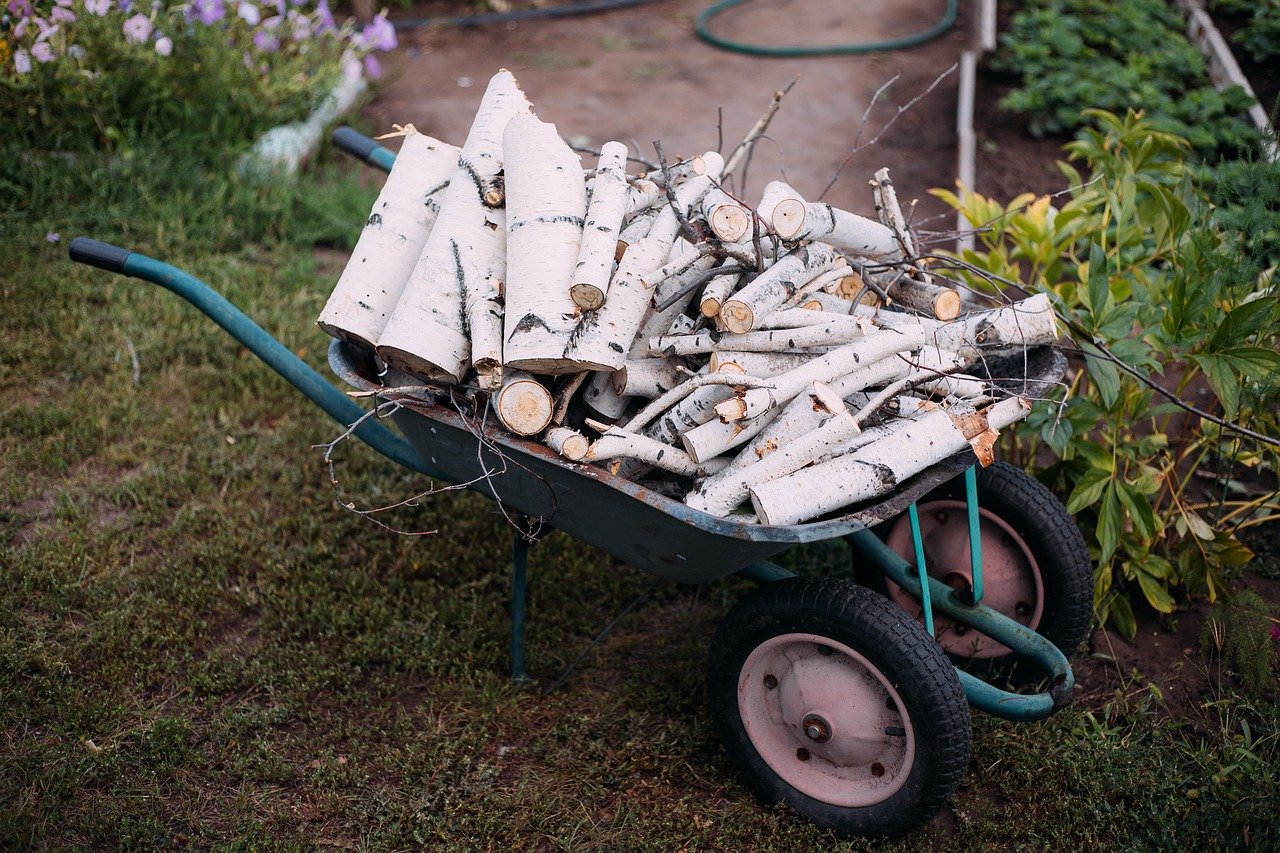
Native Plants for Topiary
When it comes to creating stunning topiary, using native plants can be a game-changer. Not only do these plants thrive in their natural environment, but they also contribute to local biodiversity, making your garden a haven for wildlife. Imagine crafting whimsical shapes with plants that are already adapted to your local climate and soil conditions—this is the beauty of choosing native species for your topiary endeavors.
Native plants offer unique shapes and textures that can seamlessly blend into your garden's ecosystem. For instance, consider using Eastern Red Cedar or Boxwood, both of which are not only aesthetically pleasing but also provide essential habitat for local birds and insects. The intricate forms you can create with these plants are not just visually appealing; they also support the environment. Think of your garden as a canvas where every native plant is a brushstroke contributing to a larger masterpiece.
Furthermore, native plants generally require less maintenance than exotic species, allowing you to spend more time enjoying your garden rather than constantly tending to it. They are more resistant to local pests and diseases, which means fewer chemicals are needed, promoting a healthier garden overall. If you’re wondering which native plants to consider, here’s a quick list of some popular choices:
- Boxwood (Buxus spp.) - A classic choice for topiary due to its dense foliage and ability to be shaped easily.
- Eastern Red Cedar (Juniperus virginiana) - Offers a unique texture and is perfect for creating larger topiary forms.
- Yew (Taxus spp.) - Known for its versatility and longevity, making it ideal for intricate designs.
- Privet (Ligustrum spp.) - Fast-growing and easily shaped, perfect for beginners.
Incorporating these native plants into your topiary designs not only enhances the visual appeal of your garden but also fosters a sense of place and connection to the local landscape. As you embark on your topiary journey, consider how each plant can tell a story—one that resonates with the environment and adds to the rich tapestry of your outdoor space.
Q: Why should I use native plants for topiary?
A: Native plants are adapted to local conditions, require less maintenance, and provide essential habitat for wildlife, making them an eco-friendly choice for topiary.
Q: Can I create intricate topiary shapes with native plants?
A: Absolutely! Many native plants, like Boxwood and Yew, are excellent for shaping and can be used to create a variety of designs, from simple forms to complex sculptures.
Q: How do I maintain native plants used in topiary?
A: Native plants generally require less care than non-natives. Regular watering, occasional pruning, and monitoring for pests are usually sufficient to keep them healthy and thriving.

Plant Care and Maintenance
Caring for your topiary plants is crucial to ensure they maintain their stunning shapes and vibrant health. Just like a sculptor chisels away at a block of marble to reveal a masterpiece, you need to nurture your plants with the right techniques. This involves a combination of watering, fertilization, and pest management. Let’s dive into each of these essential components to help you achieve top-notch topiary!
First off, watering is the lifeblood of your plants. Topiaries require consistent moisture, but be cautious not to overdo it. The key is to strike a balance. Aim to keep the soil evenly moist without letting it become soggy. A general rule of thumb is to check the top inch of soil; if it feels dry, it’s time to water. Remember, different plants have different needs, so be sure to research the specific requirements of your chosen species.
Next up is fertilization. Just like we need nutrients to thrive, your plants do too! A balanced, slow-release fertilizer applied during the growing season can work wonders. Typically, you’ll want to fertilize every 4-6 weeks from spring to early autumn. This will provide your topiary with the nutrients it needs to grow lush and maintain its shape. However, be cautious; too much fertilizer can lead to excessive growth, which may ruin the defined shapes you’ve worked so hard to create.
Finally, let’s talk about pest management. Pests can be the bane of any gardener's existence, but with proper care, you can keep them at bay. Regularly inspect your topiary for signs of pests such as aphids, spider mites, and scale. If you notice any unwelcome visitors, act quickly! You can use insecticidal soap or neem oil as natural options to combat infestations. Additionally, maintaining good air circulation and avoiding overcrowding will help minimize pest problems.
In summary, successful topiary care hinges on three main pillars: watering, fertilization, and pest management. By giving your plants the attention they deserve, you’ll not only enhance their beauty but also ensure they remain healthy and vibrant for years to come. So, roll up your sleeves and get ready to nurture your green masterpieces!
- How often should I water my topiary plants? It's best to check the soil moisture regularly. Water when the top inch of soil feels dry.
- What type of fertilizer is best for topiary? A balanced, slow-release fertilizer is ideal, applied every 4-6 weeks during the growing season.
- How can I prevent pests on my topiary? Regular inspections and using natural pest control methods like insecticidal soap can help keep pests away.

Shaping Techniques
When it comes to topiary, the art of shaping is where the magic truly happens. This is not just about snipping away at your plants; it’s about transforming them into living sculptures that can elevate your garden's aesthetic appeal. Whether you’re aiming to create a simple geometric shape or a more intricate design, understanding the various shaping techniques is essential. Let’s dive into some of the most effective methods that will help you achieve your topiary dreams.
First up, we have the classic technique of trimming and pruning. This is the foundation of topiary shaping. Regular trimming encourages dense, bushy growth, which is crucial for creating those clean lines and defined shapes we all admire. But when should you prune? The best time is usually in the spring or early summer when the plant is actively growing. This allows you to shape your topiary while ensuring that it has enough energy to recover quickly. Remember, patience is key! You can’t rush nature, and a well-shaped topiary takes time to cultivate.
Next, let’s talk about the use of templates and guides. These tools can be a game-changer, especially if you’re new to topiary. Think of them as the blueprints for your masterpiece. By using templates, you can achieve precise and consistent shapes, ensuring that your topiary looks polished and professional. You can create your own templates using cardboard or even purchase them online. Simply position your template over the plant and trim along the edges. It’s a straightforward method that can make a world of difference in your shaping process.
Additionally, there are various shaping styles that can add flair to your garden. For instance, geometric shapes like spheres, cones, and cubes can provide a modern touch, while more organic forms can create a whimsical feel. The key is to choose a style that resonates with your overall garden design. If you’re feeling adventurous, why not mix and match? A combination of geometric and organic shapes can create a visually stunning landscape that keeps your garden interesting throughout the seasons.
To further enhance your shaping skills, consider experimenting with different plants. Each plant species has its unique growth habits and foliage density, which can affect how they respond to shaping. Some plants, like boxwood and yew, are particularly forgiving and can withstand heavy pruning, making them ideal for beginners. On the other hand, more delicate plants may require a gentler touch and less frequent shaping to maintain their health. Understanding the characteristics of your chosen plants will help you tailor your approach, ensuring that your topiary not only looks great but thrives in your garden.
Lastly, let’s not forget about the importance of maintenance. Once you’ve shaped your topiary, it’s essential to keep up with regular care. This includes watering, fertilizing, and monitoring for pests. A healthy plant is much easier to shape and will maintain its form better over time. Use organic fertilizers to promote growth and consider applying a layer of mulch to retain moisture and suppress weeds. By investing time in maintenance, you’ll ensure that your topiary remains a stunning focal point in your garden for years to come.
Q: How often should I prune my topiary?
A: Generally, pruning should be done every 4-6 weeks during the growing season. However, this can vary depending on the plant species and your desired shape.
Q: Can I shape any plant into a topiary?
A: Not every plant is suitable for topiary. Look for plants with dense foliage and a growth habit that can withstand regular trimming, such as boxwood, privet, or yew.
Q: What tools do I need for shaping topiary?
A: Basic tools include sharp pruning shears, hedge trimmers, and possibly a template for more intricate designs. Make sure your tools are clean and sharp to ensure clean cuts.
Q: Is it possible to shape a topiary in the winter?
A: While it’s best to shape during the growing season, light trimming can be done in winter for certain evergreen species. Just be cautious not to stress the plant during its dormant phase.
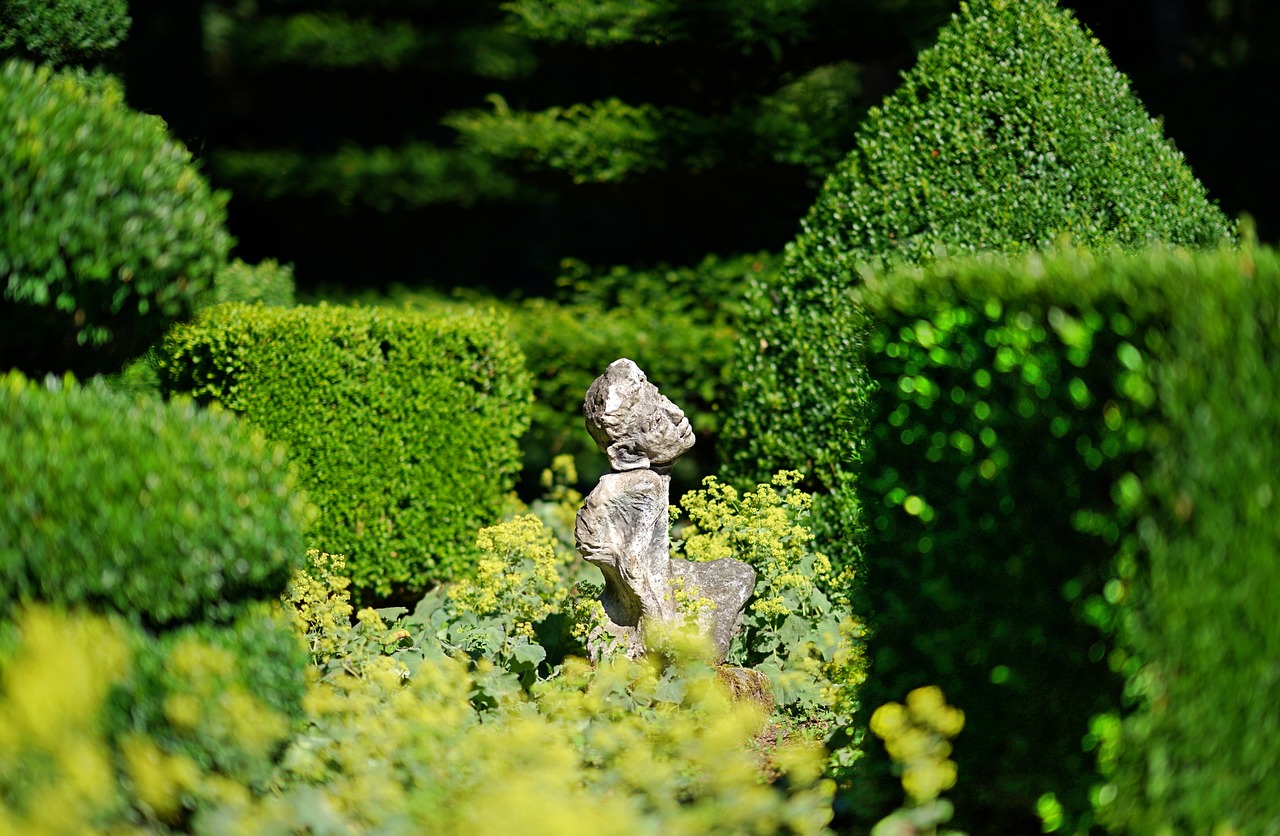
Trimming and Pruning
When it comes to creating stunning topiary shapes, are your best friends. Think of trimming as giving your plants a stylish haircut; it’s all about maintaining that chic silhouette while ensuring the health of your greenery. But wait, why is this so important? Well, just like we wouldn’t let our hair grow wild and untamed, your topiary plants need a little love and care to keep them looking their best.
First off, let’s talk about timing. The best time to prune your topiary is during the growing season, typically in late spring or early summer. This is when your plants are bursting with energy and can recover quickly from the snip-snip action. But don’t just grab any old scissors! You’ll want to use sharp, clean pruning shears to make precise cuts that won’t harm the plant. Dull tools can crush the stems, making them susceptible to disease.
Now, you might be wondering how often you should trim your topiary. Generally, a good rule of thumb is to trim every 4-6 weeks during the growing season. This keeps your shapes defined and encourages bushy growth. However, the frequency can vary depending on the plant species and how quickly they grow. For instance, fast-growing plants like boxwood may require more frequent attention than slower growers like yew.
While trimming, it’s crucial to maintain a clear vision of the shape you want to achieve. Using a template or guide can be a game-changer. Imagine trying to carve a perfect pumpkin without a stencil—it’s doable, but way easier with some guidance! You can create your own templates from cardboard or even purchase them online. Just place the template around your plant and trim along the edges for a flawless finish.
Another essential aspect of pruning is removing any dead or diseased branches. This not only improves the appearance of your topiary but also promotes healthy growth. Always look for signs of damage, such as discoloration or wilting leaves, and cut these parts out to keep your plant vibrant. Additionally, thinning out crowded areas allows for better air circulation and sunlight penetration, which are vital for your plant’s health.
Here’s a quick checklist to keep in mind while trimming:
- Use sharp, clean tools.
- Trim during the growing season.
- Maintain the desired shape with templates.
- Remove dead or diseased branches.
- Encourage air circulation by thinning crowded areas.
In summary, mastering the art of trimming and pruning is essential for any aspiring topiary artist. It’s a delightful blend of creativity and care that transforms your plants into living sculptures. So, grab those shears, envision your masterpiece, and let the trimming begin!
Q1: How often should I prune my topiary plants?
A1: Generally, you should prune every 4-6 weeks during the growing season to maintain defined shapes and encourage bushy growth.
Q2: What tools do I need for trimming topiary?
A2: Sharp, clean pruning shears are essential for making precise cuts. You may also want to use templates for guidance.
Q3: Can I trim my topiary in the fall or winter?
A3: It’s best to avoid heavy pruning in the fall or winter, as plants are dormant during these seasons. Focus on trimming during the growing season for optimal results.
Q4: How do I know if my topiary needs pruning?
A4: If your topiary looks unruly, has dead or diseased branches, or if you notice excessive growth, it’s time for a trim!

Using Templates and Guides
When it comes to creating stunning topiary shapes, can be a game-changer. Imagine trying to carve a masterpiece without a blueprint—it's possible, but the results might not be what you envisioned. Templates serve as a roadmap, helping you achieve precision and consistency in your designs. They can be as simple as a piece of cardboard cut into your desired shape or as intricate as professionally designed patterns available online.
One of the best aspects of using templates is that they allow you to visualize your design before you start trimming. You can lay the template over your plant and see how the shape fits, making adjustments as necessary. This not only saves time but also reduces the risk of making mistakes that could lead to uneven or unbalanced topiary. For beginners, templates can provide a sense of confidence, guiding your hands as you shape your plants into beautiful forms.
There are various ways to create or find templates that suit your topiary needs:
- DIY Templates: You can make your own templates from cardboard or thick paper. Simply draw the shape you want and cut it out. This is a great way to personalize your designs.
- Online Resources: Many gardening websites and forums offer downloadable templates for popular topiary shapes. These can range from simple geometric forms to complex animal figures.
- Commercial Products: Some garden supply stores sell pre-made topiary templates that are durable and easy to use. These can be particularly handy if you’re looking for something specific.
Once you have your template, the next step is to position it correctly on your plant. Use stakes or pins to secure it in place, ensuring it doesn’t shift as you work. This will help you maintain the shape as you trim. Additionally, consider using a chalk line or garden twine to outline the shape on your plant, giving you a clear visual guide to follow.
Another helpful tip is to regularly step back and assess your work from different angles. This allows you to see how the shape is developing and make any necessary adjustments. Remember, topiary is an art form, and like any artist, you need to be open to refining your work as you go along.
In conclusion, utilizing templates and guides in your topiary journey not only enhances your creativity but also streamlines the process of shaping plants into stunning forms. They provide a solid foundation on which you can build your skills and create unique designs that will wow anyone who steps into your garden.
Q: Can I use any plant for topiary?
A: While many plants can be shaped, it's best to choose species known for their dense growth and ability to withstand pruning, such as boxwood or yew.
Q: How often should I trim my topiary?
A: Regular trimming is essential for maintaining shape. Depending on the plant's growth rate, you may need to trim every few weeks during the growing season.
Q: Are there specific tools I should use for topiary?
A: Yes, using sharp pruning shears, topiary shears, and even electric hedge trimmers can make the process easier and more efficient.
Q: Can I create topiary shapes without a template?
A: Absolutely! While templates can help, experienced gardeners often rely on their eye and skill to shape their plants. Just remember to take your time and enjoy the process!
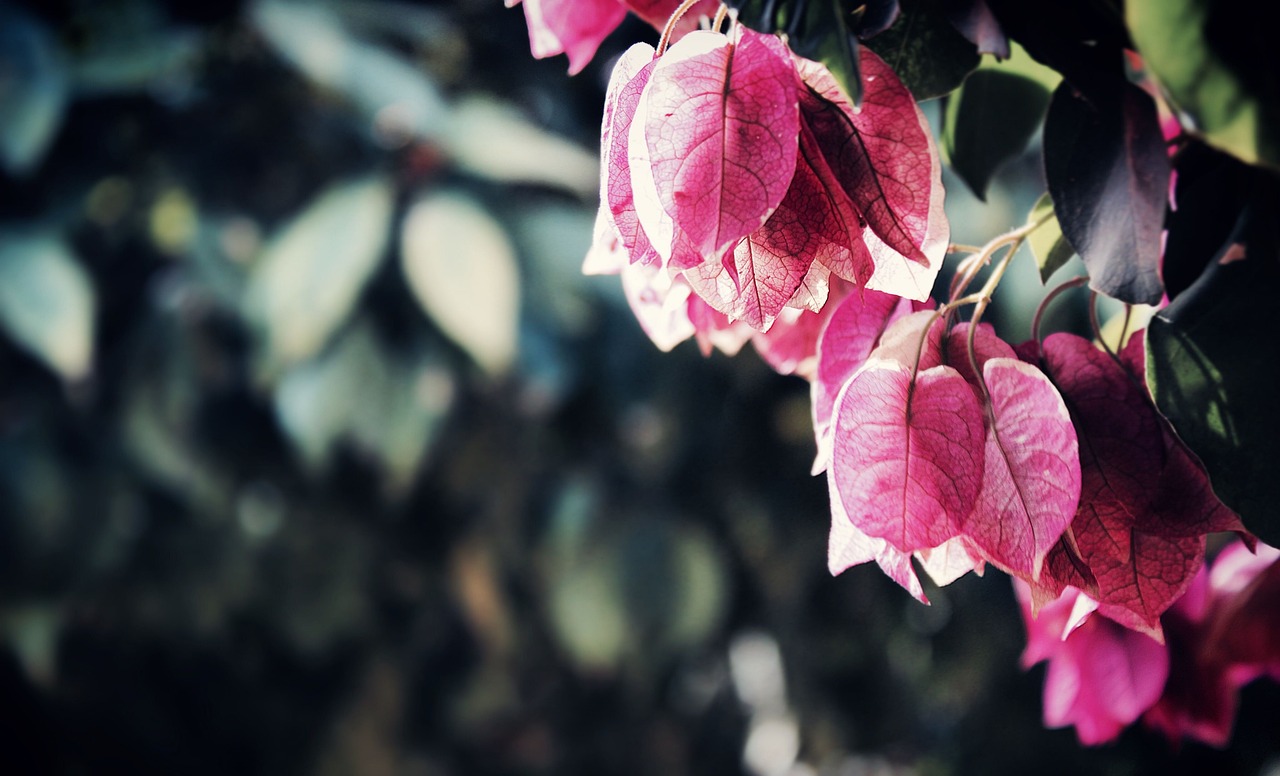
Design Ideas for Topiary
When it comes to topiary, the possibilities are as limitless as your imagination! Whether you want to add a touch of elegance, whimsy, or a modern flair to your garden, creative design ideas can elevate your outdoor space to new heights. Imagine walking through your garden and being greeted by geometric shapes that catch the eye or playful animal forms that bring a smile to your face. In this section, we’ll explore a variety of topiary design ideas that will inspire you to get creative with your pruning shears!
One popular trend in topiary is the use of geometric shapes. These designs can add a contemporary twist to traditional gardens, creating a striking visual effect. Think about crafting spheres, cubes, and pyramids from your plants. Not only do these shapes offer a modern aesthetic, but they also provide a sense of order and structure to your garden layout. For example, a series of neatly trimmed spheres can create a beautiful pathway, guiding visitors through your green oasis.
To get started with geometric topiary, consider the following tips:
- Choose the right plants: Opt for species that can be easily shaped, such as boxwood or yew.
- Plan your layout: Sketch your design on paper before you start trimming to ensure you achieve the desired look.
- Use the right tools: Invest in quality pruning shears and topiary frames to help maintain clean lines.
Another delightful approach to topiary is animal shapes. This style brings a sense of fun and charm to your garden, making it a perfect choice for family-friendly spaces. Imagine a well-trimmed hedgehog or a soaring bird crafted from lush greenery! Animal topiary can serve as a focal point or a hidden surprise, encouraging exploration and interaction in your outdoor space.
When creating animal topiary, consider these techniques:
- Start small: If you’re new to topiary, begin with simpler shapes before moving on to more complex designs.
- Utilize templates: Use templates to guide your shaping process, ensuring your animal forms are recognizable.
- Experiment with textures: Combine different plant species to create varied textures and colors for your animal topiary.
Additionally, abstract forms can add a unique twist to your garden. These designs allow for personal expression and creativity, as they don’t adhere to strict shapes. You can create flowing lines, spirals, or even whimsical shapes that reflect your personality. Abstract topiary can serve as conversation starters, making your garden not just a space for relaxation but also a canvas for artistic expression.
Lastly, don't forget to consider the seasonal changes in your garden. Different plants will showcase their beauty throughout the year, and incorporating seasonal elements into your topiary can keep the design fresh and engaging. For instance, using evergreen plants ensures that your topiary retains its shape and vibrancy during the winter months, while flowering plants can add bursts of color in spring and summer.
In conclusion, the world of topiary design is vast and full of potential. Whether you opt for geometric shapes, whimsical animals, or abstract forms, the key is to let your creativity flow. Remember, your garden is an extension of yourself, so make it a place that reflects your unique style and brings joy to all who visit!
Q: What are the best plants for beginners in topiary?
A: Beginners should consider using boxwood, privet, or yew as they are hardy and easy to shape.
Q: How often should I prune my topiary?
A: Regular trimming is essential, and it’s best to prune your topiary every few weeks during the growing season to maintain its shape.
Q: Can I create topiary shapes in pots?
A: Absolutely! Container topiary can be a great option for smaller spaces and allows for flexibility in design.
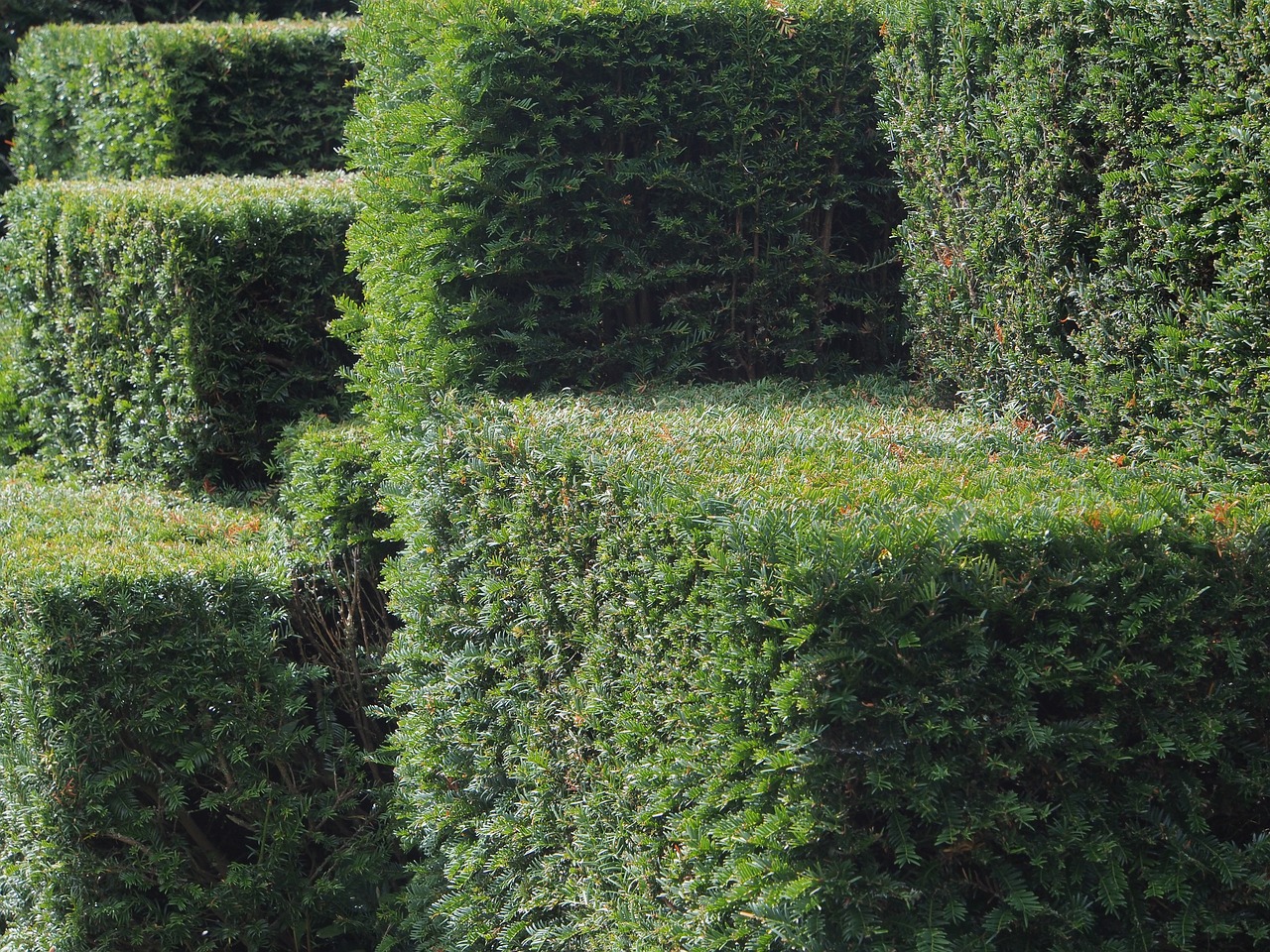
Geometric Shapes
When it comes to topiary, are like the architectural wonders of the plant world. They provide a stunning contrast to the organic, flowing lines of nature, creating a sense of order and elegance in your garden. Imagine walking through a lush garden, only to be greeted by perfectly crafted spheres, cubes, and pyramids of greenery. These shapes not only draw the eye but also invite curiosity and admiration.
Creating geometric shapes in topiary involves a blend of creativity and technique. The first step is to choose the right plant. Some plants lend themselves better to geometric shaping due to their dense foliage and growth habits. For instance, boxwood and yew are popular choices because they respond well to pruning and can maintain their shape over time. Once you've selected your plants, the fun begins! You can start by visualizing the shapes you want to create.
To achieve the perfect geometric form, consider using templates and guides. These can be as simple as cardboard cutouts or as sophisticated as wire frames. By using a template, you can ensure that your cuts are consistent and precise, which is crucial for achieving that clean, polished look. For example, if you're aiming to create a sphere, you might use a round template to guide your trimming, ensuring that all sides are evenly shaped.
Moreover, the process of shaping is not just about aesthetics; it also involves understanding the plant's growth patterns. Regular trimming is essential, and knowing when to prune is just as important as knowing how. For geometric shapes, you’ll want to prune regularly to maintain those sharp lines and defined edges. This means a bit of attention throughout the growing season, but the payoff is well worth it!
Here’s a quick overview of some popular geometric shapes you might consider:
| Shape | Description | Recommended Plants |
|---|---|---|
| Sphere | A classic, round shape that adds softness to any garden. | Boxwood, Yew |
| Cube | Sharp, angular shape that provides a modern touch. | Privet, Holly |
| Pyramid | Creates height and draws the eye upward. | Cypress, Juniper |
Incorporating these geometric shapes into your garden design can transform an ordinary space into a visual masterpiece. They work particularly well in formal gardens, where symmetry and structure are key components. However, don't shy away from using them in more relaxed environments; a well-placed geometric topiary can create a delightful surprise amidst a more casual planting scheme.
So, are you ready to dive into the world of geometric topiary? Remember, it’s not just about the end result; it’s about enjoying the process of shaping and nurturing your plants. Your garden will thank you for the time and creativity you invest, and your geometric shapes will stand as a testament to your gardening prowess.
- What tools do I need for geometric topiary? A sharp pair of pruning shears, gloves, and a template or guide are essential.
- How often should I prune my topiary shapes? Regular maintenance every few weeks during the growing season is recommended to keep shapes defined.
- Can I create geometric shapes with any plant? Not all plants are suitable; look for dense, slow-growing varieties for the best results.

Animal Topiary
Animal topiary is not just a gardening technique; it's an enchanting way to breathe life into your outdoor space! Imagine walking through your garden and being greeted by a charming fox or a majestic elephant, all crafted from lush greenery. This whimsical form of art allows you to transform ordinary plants into delightful animal shapes, adding a playful touch that captivates both children and adults alike.
Creating animal topiary can be incredibly rewarding, but it does require a bit of creativity and patience. The key is to start with the right plants and to have a solid plan in place. Typically, plants like boxwood, yew, or privet are excellent choices due to their dense foliage and ability to withstand frequent trimming. When shaping your plant into an animal form, think about the proportions and features that define the creature you’re aiming to create. For instance, a rabbit might need a rounded body and long ears, while a lion would require a more robust frame and a mane.
To achieve the best results, consider using templates or guides. These can be as simple as a sketch or as elaborate as a pre-made frame that you can attach to your plant. By following a guide, you can ensure that your animal topiary maintains its intended shape as it grows. Remember, the goal is to create a recognizable form, so take your time and adjust as necessary. As you prune and trim, step back frequently to assess your progress. This will help you maintain the overall shape and make adjustments before the plant becomes too dense.
One of the most delightful aspects of animal topiary is the variety of designs you can create. Here are a few popular animal shapes to consider:
- Bunny: A classic choice for spring, bunnies can be shaped with a round body and long ears, perfect for Easter decorations.
- Bird: Whether it’s a perched owl or a soaring eagle, bird topiaries can add a touch of elegance to your garden.
- Dog: A playful pup can bring joy and personality to your outdoor space, especially if you have children.
- Cat: A sleek feline can add a modern twist, with its arched back and pointed ears creating a striking silhouette.
As you embark on your animal topiary journey, remember that the fun lies in the process. You can involve your family, making it a bonding activity where everyone can pitch in their ideas and creativity. Not only does this foster a sense of community, but it also allows you to share in the excitement of watching your topiary come to life. So grab your clippers, unleash your imagination, and let your garden be a canvas for your artistic expression!
Q: How long does it take to shape an animal topiary?
A: The time it takes to shape an animal topiary can vary widely depending on the plant species, the complexity of the design, and the growth rate of the plant. Generally, it can take several months to a few years to achieve a well-defined shape.
Q: Can I create animal topiary from any plant?
A: While you can technically use any plant, it's best to choose species with dense foliage and a growth habit that responds well to pruning. Common choices include boxwood, yew, and privet.
Q: How often should I trim my animal topiary?
A: Regular maintenance is key! You should trim your topiary at least two to three times a year, but more frequent trimming may be necessary during the growing season to maintain the desired shape.
Q: Are there any special tools I need for animal topiary?
A: Basic gardening shears or pruning scissors are essential, but you may also want to invest in specialized topiary shears for more intricate designs. Additionally, a template or frame can help guide your shaping process.
Frequently Asked Questions
- What is topiary?
Topiary is the art of shaping plants into decorative forms, often resembling animals, geometric shapes, or abstract designs. It adds a unique and artistic touch to gardens, enhancing their visual appeal.
- What types of plants are best for topiary?
Popular plants for topiary include boxwood, privet, and yew. These species are favored for their dense foliage and ability to withstand frequent trimming, making them ideal for creating intricate shapes.
- How do I choose between deciduous and evergreen plants for topiary?
Deciduous plants lose their leaves in winter, offering a different aesthetic throughout the seasons, while evergreens maintain their foliage year-round. Your choice depends on whether you prefer year-round greenery or seasonal changes in appearance.
- Can I use native plants for topiary?
Absolutely! Using native plants not only supports local biodiversity but also provides unique shapes and textures that harmonize with your garden's ecosystem, making your topiary both beautiful and environmentally friendly.
- What are some essential care tips for maintaining topiary?
Regular watering, appropriate fertilization, and vigilant pest management are key to keeping your topiary healthy. Ensure your plants receive enough moisture and nutrients to thrive while maintaining their desired shapes.
- What shaping techniques should I use for my topiary?
Start with basic trimming and pruning to create clean lines. As you gain confidence, explore more intricate designs using templates or guides to help achieve precise shapes and maintain consistency in your topiary.
- What are some creative design ideas for topiary?
Consider geometric shapes like spheres and cubes for a modern look, or go whimsical with animal topiary that adds charm to your garden. The possibilities are endless, so let your creativity shine!



















